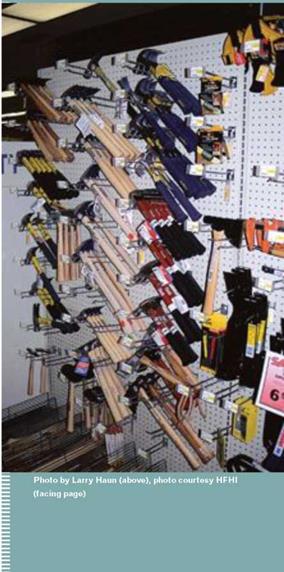BASICS
Getting Acquainted with Tools and the Parts of a House
The craft of carpentry has a long and honorable heritage. Ages before we began recording our history, our ancestors were shaping and joining materials to create various types of shelters. Today, we are the fortunate inheritors of centuries of accumulated knowledge, experience, skills, and tools. Although carpentry continues to be transformed by technology (from computer-aided design programs to cordless tools and pneumatic nailers), many basic tools and techniques remain unchanged.
It still takes a human hand wrapped around a hammer handle to build a decent place to live. Like basic carpentry tools, many parts of the house have stayed the same over the years. Technology has improved some of the parts, as well as created new ones. But the house is still the same basic structure it always was. Before you start building a house, it’s essential to learn the common language spoken on construction sites and in home centers, lumberyards, and building-supply stores.
When I started working as a carpenter in the late 1940s, almost every task was done with hand tools. I remember spending hours cutting a pile of 2 x4s to length with a crosscut saw. Floors were sheathed with 1x6s, both ends of which had to be cut at 45-degree angles. Cutting all the pieces of a house by hand was a big job, to say the least. In 1950, when I bought my first circular saw, my world as a carpenter changed forever.

|
|
|
Have a good job-site handsaw. A compact, toolbox-size handsaw is good to have around in case someone else is using the circular saw or you have just a few boards to cut. |
tools on the market can make buying tools a difficult task. Each time I walk into a tool center or receive a tool catalog in the mail, I am amazed by the dizzying array of carpentry tools offered for sale. When there are 50 different models, even buying something as basic as a hammer can be frustrating.
So what do you look for when buying a tool? Well, it helps to remember that tools are not like stretch socks, where one size fits all. A circular saw, for example, may have the right combination of power and weight but still feel out of balance or awkward when you hold it. A tool that’s not comfortable is like a shoe that is one size too small. It’s never a bargain, regardless of price. A tool that feels good in your hands will most likely be easy and safe to use. So, whenever possible, try before you buy. Visit home centers
and tool dealers that have good selections of tools. Grip the tool to test its balance and feel. If you have small hands, rule out tools that aren’t easy to hold comfortably. Try the controls and adjustments, too. Use this hands-on information to make your selections.
Talk to carpenters, who use tools daily, and ask them for their preferences. Research magazines, such as Fine Homebuilding and the Journal of Light Construction, which evaluate tools. And always buy the best quality you can afford.
Most of us know the experience of wishing we had bought quality rather than a piece of junk. Professional tools cost more initially, but they are more durable, more powerful, and easier and safer to use. Ironically, they make it easier to be a beginner.
If you’re intending to work professionally as a carpenter, you’ll eventually acquire quite a large collection of tools. If, however, you’re only planning to build one house or work with Habitat as a weekend volunteer, a small kit of essential tools should stand you in good stead. In addition to the basics described on the following pages, you can acquire more specialized tools as you need them, which is the best way to do it anyway. Otherwise, you may wind up with unnecessary tools that clutter your tool belt, your storage bucket, and your life. You can also rent specialized tools if you plan to use them just a few times.








Leave a reply